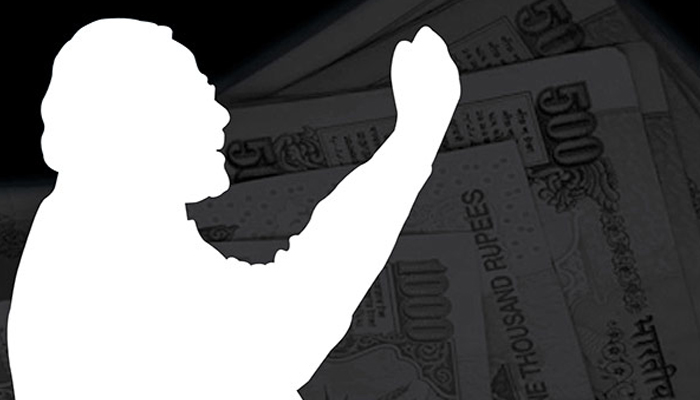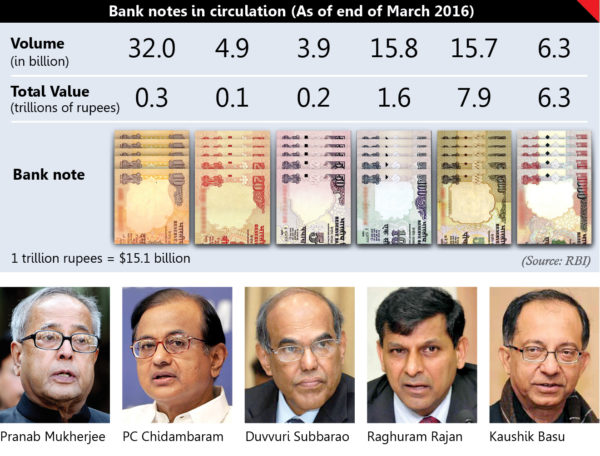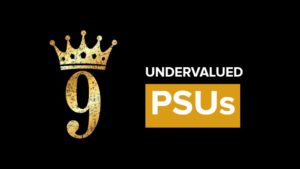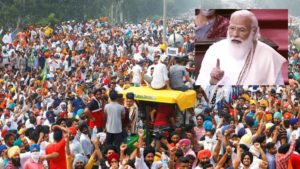When Mr Narendra Damodardas Modi took over as India’s 14th Prime Minister on 26 May, 2014, people rejoiced of having elected one of them, who came from a humble background. As he completed first half of his five year term doing small incremental things, populace had grown impatient with no noticeable change in ground reality: businesses, jobs, crime, corruption.
Then on 8 November night, he threw the country in great disruptions, three days after laabhpancham when most people must be holding cash in their homes during Diwali pooja, the prime minister, in a way uncharacteristic of Mr Modi, announced debauch of 86% of India’s currency notes in circulation in denominations of Rs 500 and Rs 1,000 with immediate effect. Just two weeks ago, on the intervening night of 28-29 October,the prime minister had ordered the execution of surgical strikes by army on terror launchpads in India’s border valley known as Pakistan-occupied-Kashmir. The prime minister had started taking bold decisions that had long term international repercussions.
An unpredictable Mr Modi is driven by a desire to take incredible steps, listen to none and do what he thinks will take India to new heights. People though inconvenienced might have to adjust, criminals and corrupt politicians not sure.
First the surgical strike on terror camps on the other side of the Line of Control. Next, surgical strike against undeclared income. Two decisions in just a fortnight. Both unprecedented, never imagined. Both were the extremes that any Indian political leader could even think of. It only shows how unpredictable Prime Minister Narendra Modi is. The first one sent a strong message to the neighboring country that this man not only can come uninvited when he comes to know the premier’s granddaughter is getting married the same day but also order his military inside the enemy territory with the same ease. The second one has taken away the sleep of those who have been looting the nation since last 70 years. These two decisions by PM Modi confirm that India has ultimately got the much-needed unpredictable and strong PM who can do anything, yet staying alert, honest, unbiased and with a pragmatic attitude.
India, after independence, goes first time from black to white. It is the first serious big move to clean financial management. No government ever tried to do this since the corrupt system that continued after independence sucked in all those who were supposed to clean it. So the class-ridden autocracy where a few controlled most of the wealth did not permit the governments to take any drastic measure as its members were a part of either the political system or the bureaucracy that actually run the show.
Did anyone expect this government abolishes 500 and 1000 rupees note, giving notice of just four hours one fine evening? But let it be on record that this was not a surprise decision. PM Modi kept giving hints. When he asked the big number of unbanked population, estimated at 30 crores, to open their bank accounts even if they had no money, it was the first message. When he talked about financial inclusion, asked to buy paper gold, it was the second message. When he warned about black money and said declare your income, gave months time, it was the third message. So the steps were already decided long back, which culminated in the debauch of 86% of currency notes in circulation in denominations of Rs 500 and Rs 1,000.
PM Modi knows well that as long as it will not be highly painful to be corrupt, Indians will keep coming with newer ways and means to stash away their ill-gotten wealth. And with this in mind, he maintained a high degree of secrecy, although it prevented him to make a satisfactory arrangement so the people did not suffer when implemented.
Besides corruption and tax evasion, black money has been a major problem for the economy for many decades. It has created a parallel economy. Many fundamental and basic necessities of a common man are out of their reach.
So, in all honesty, this was a very bold and unprecedented move with all the elements of political suicide. As PM Modi himself has accepted “I know the forces up against me, they may not let me live, they may ruin me because their loot of 70 years is in trouble. If you asked me to defeat the menace of black money, how can I not do it.” No doubt, the corrupt and vested interests are too powerful. It shows PM Modi’s determination to tackle corruption and make very fundamental reforms. India’s financial machinery required such recalibration.
This move has sent for the first time positive signals about the government’s determination to clamp down on black money. Although, being its mixed nature (fake currencies included), the parallel economy is hard to quantify. But there have been serious studies and it is estimated to be equivalent to around a quarter of the GDP. Several countries around the world, such as Turkey, Libya and Zimbabwe had demonetized their currency mainly due to hyperinflation and to curb a black economy but their processes were different.
Corporates will see economic activity decline, with lower sales volumes and cash flows. The impact will depend on how quickly liquidity returns to the system and transaction flows are restored. The economic disruption will significantly impact the ability of borrowers to repay loans.
– Moody’s
Here PM Modi announced and within three and a half hours, turned almost 85% of currency into paper. The unpredictable PM did not inform even his cabinet and the RBI board responsible to endorse the move till the last hour. So no one saw it coming and park their money. Demonetization has happened twice in India. One-and-a-half years before Independence in 1946, and again in 1978. Both the moves were a failure because people anticipated the move and had ample time to park their black money in safe zones. In 1978, the Rs 1000 note was limited in a few hands, as it was a huge amount (considering the inflation in today’s time it comes around Rs 30,000).
A nationwide survey conducted by C-Voter claims that the demonetisation is seen positively by a large part of the population across age groups, income levels, living in urban and rural areas. A whopping 80-86% of those surveyed said the inconvenience caused is worth the effort of combating black money. Conversely, 23.8% of urban, 24.3% semi-urban, and 36% of rural respondents agreed that demonetisation was a ‘good step but poorly implemented’. Well over 55% of those surveyed thought support for PM would take a beating if he succumbed to political pressure and rolled back the move.
PM Modi is perhaps the only leader I’ve come across who’s unaffected under pressure.
– Bill Gates
The unpredictable PM dared to shovel-out black money and transform an overwhelming cash economy to a cashless one. So it was not only to unearth black money rather it was more of a transformative move. Even if demonetization may not root out corruption completely, but a cashless society hardly leaves fewer avenues for corruption. This strong step will benefit the growth of digital payments and digital banking in India. India has got more than 60% population below the age of 40 years who believe in digital life and plastic money.
Although the immediate short-term impact of the demonetization will be negative, with so many positive factors the subsequent quarters will see a revival in growth. And the factors are many – inflation could fall sharply, there will be a sharp reduction in real estate prices and a reduction in sales of white goods will increase the household savings, which will move to the system. Now people will be tempted not to hoard money at home. When much of the parallel economy will shift to the formal one leading to more tax collections which can further lead the finance minister to reduce income tax rates.
Now where this money will move? Certainly, equities will be the biggest beneficiary as there will be a gradual shift from physical assets (real estate/gold) to financial assets; and in the long run lower interest rates and lower inflation will benefit listed companies through lower borrowing costs, which will increase their profitability and valuations. The demonetization will shift demand away from informal channels and boost the growth potential of the formal segment in the medium term. It will also have a positive impact on the ease of doing business.
It will certainly bring some sanity in the real estate market where more than half of the ill-gotten wealth gets parked, not only by wealthy politicians but also by those staying outside the country.
By demonetizing, the government has rendered illegal 86% of the currency in circulation, totaling Rs 14.2 lakh crore. So on December 30, the RBI may actually find how much money could not get laundered and could write off that amount. Also, it will get a huge sum deposited in banks that could be harnessed for productive purposes. There are a lot many policies and programs the PM has announced that are to be implemented and where a large sum of money is to be allocated. Make in India in one such where the government is inviting companies and investors. So far, there were not many takers. This move has raised the prospect of India’s higher long term growth potential and convinced investors that reforms will be pushed very deeply. So PM Modi has not only created history, he has succeeded in one stroke reinforced his government’s reformist and anti-corruption credentials.
It’s clearly visible now that PM is getting into his stride. The kind of body language he has displayed and the words and the style he used while directly attacking the opposition only reinforces our view that he will henceforth embrace bold measures wherever these are seen to be needed.
When the PM attacked the shadow economy on 8 November, the opposition faced a dilemma and went into a temporary shock. No one spoke for two days except TMC chief Mamta Banerjee, who called it a “draconian decision”. They were gauging public opinion, be certain that such a move, people will back wholeheartedly. Since corruption was the main plank in Modi’s mandate, it would have been political suicide for the politicians at this stage to criticize the PM. It was only when they saw chaotic scenes at ATMs and public angst that they came out & assembled together. In the name of “common man,” the opposition took up the guns to target the prime minister.
Should the currency surgical strike result in the financial cleansing as planned by PM Modi, his party may again register a new record number of seats in the parliament. But the gamble is serious as it may also push the party into oblivion. And in this, the major apprehension is India’s colonial bureaucracy, which will not let him succeed. They will try to derail the measure through vexatious procedures and poor logistical planning. After all, in the list of India’s biggest crooks, most of the names belong to the IAS/IPS and allied group officers and people from all the law enforcement agencies. So PM Modi’s next surgical strike should be the abolition of the very nature of Indian bureaucracy and employ professionals from the required field. It’s ridiculous to find people heading ministries/ institutions they have no clue about.
India was governed by those who were too soft and too easily swayed by either seductive political rhetorics or threats by their own political party. Modi’s relentless drive, his pragmatism, his hard-headedness, his uncanny political instinct, his energy level, his zero tolerance for corruption, and above all his obsession with the idea of India, doesn’t gel with that list.
When Mr Lee Kuan Yew passed away, PM Modi in his condolence note tweeted, “A far-sighted statesman and a lion among leaders.” It shows his admiration for the man who created history by changing the landscape of a nation badly bruised. And India badly needed its own Lee Kuan Yew.
Economics & Politics of Currency Debauch
Politics generally has nothing to do with economics. But often, these are intermingled to force change in people’s behavior in economic and political arena with undying and un-denying focus on serving capitalistic interest. The government claims that the latest currency confiscation move is aimed at killing corruption disease and stop terror funding. The PM urged public to bear the short term inconvenience.
The reality is that it’s going to be a permanent change in people’s economic spending behavior, one big step on the way to cashless society, leaving a trail on what you do and where you buy. Not without a reason, the government gave out licenses a few months ago to a dozen of corporates to start payment banks for money transfers and digital payments.
As regards corruption and terror funding, all can nurture this hope of erasing the centuries’ old truth. The real economics is that the move will help government, according to its own estimates, write off about Rs 4 tn, 6% of the current national debt of Rs 58.90 tn further leading to improved ratings and the supplement perception among international investors. Besides, it will provide government mandarins headroom for future stimulus should the economy falter for any reason. If all is well, the government will have more leeway to capitalize banks that are reeling under corporate loan defaulters and also start populist measures when the election time comes in 2019.
Where does the buck stop?
If 86% of India’s currency notes in circulation were in denominations of Rs 500 and Rs 1,000, then it only shows the callous attitude of all the previous Reserve Bank of India governors and all the finance ministers as well as officials. Either these so-called responsible people did it intentionally with some good or bad motives or they were living in a fool’s paradise forgetting the universal truth about India that 90% of its population lives in villages and small towns and 15% of the population undernourished, and where 194.6 million people go hungry every day. This vast majority of the population doesn’t need a high denomination note. They need Rs10, 20, 50 or 100 notes.
This is a country where the governments have been proclaiming for decades that it was one of the fastest-growing economies of the world. But this is also the country where a Jharkhand hospital serves food to patients on the floor because it has no money to buy plates. In a country where 50% of the populations don’t have proper shelter, 70% don’t have access to toilets, 35% of households don’t have a nearby water source, 85% of villages don’t have a secondary school, how these irresponsible people are going to justify this huge 86.4% mathematics?
Former PM Manmohan Singh castigated the government, saying its implementation was a “monumental management failure” and a case of “organized loot and legalized plunder.” And former chief economic advisor Kaushik Basu says that “the demonetization drive was not ‘good economics’ and that the damage it causes will be greater than its benefits. Its economics is complex and the collateral damage is likely to far outstrip the benefits.” But can he deny that the maximum black money was generated in the country between 2004 and 2014?
All these gentlemen are equally responsible to help generate a parallel economy in the country. And these are the people responsible for the serpentine lines at ATM machines. After all, 85% of the currency notes of the system have to be changed.
How long taxpayers will subsidize the ‘Farmers’?
The same is the case with farmers. Not all the farmers are poor, yet all enjoy a tax-free income. This loophole has given a chance to politicians and other moneybags to have a farm and show some of the ill-gotten wealth as income from farming. Early this year a retired Income Tax officer Vijay Sharma filed an RTI request for disclosing the number of people who had filed agricultural income returns. The figures he got showed an exponential increase from 2004 to 2013, touching a total of almost Rs 2,000 lakh crore. He then asked the department to release the top 100 names which was denied. The official figure about the total income declared by ‘farmers’ in 2011 and 2012 was a stupefying Rs 874 lakh crore. The average income declared by each assessee during those years was Rs 30 crore and Rs 80 crore respectively. These ‘farmers’ should be asked which is that expensive crop that generates this kind of income. Just imagine if even one-fourth of this amount is taxed it will generate a huge amount. At present only 2.6% of the population pays taxes. India, has been thriving in the cash economy, provides enough space not to allow money to enter in the tax system and it is the honest taxpaying citizens of the country who suffer. It is a myth that an IT professional or other such high-paying jobs earn maximum money who takes a significant cut in salary to pay the taxes. A raid at some of the roadside stalls in Mumbai last month unearthed crores, establishing the fact that these small shop owners earn much more than an IT professional and pay absolutely no tax. This forces the government to increase taxes, impacting the honest taxpaying citizens.
To Our Unpredictable PM
Sir, in the preamble to your “demonization” drive, (it’s called so for reasons hereinbelow), you mentioned in order to fight corruption and stop terror financing; you have ordered the demonetization of HDN. But on day one of the rollout, you and your government’s objectives have changed.
Your administrative machinery’s every day tinkering aims at achieving the self-goal of ensuring that 25% of HDN are canceled amounting to about Rs 4 trillion, equal to 6% of debt and 3% of GDP proves that political success is the only goal of this exercise which is aimed at maiming your political opponents.
Your Finance Minister and officials say that the “demonization” drive will lead to creating a surplus in the hands of the government, which could help reduce debt, finance infrastructure and mass housing. But Mr PM, this is an economic and fiscal issue tangentially different from the noble objectives you listed on 8 November.
As a result of rationing of currency and limits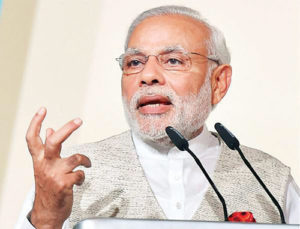 on withdrawals, the parasitic bankers fraudsters are floating on the money with a credit-deposit ratio of 50%, the lowest in decades, aiming to cut deposit rates. RBI is now successfully able to redeem $25 bn FCNR due late November by making banks buy newly issued bonds. By precipitating consumption contraction, RBI will see lower CPI reading and cut rates. But Mr PM, these are monetary and banking objectives that weren’t in your speech, as well as subsequent, exhorts.
on withdrawals, the parasitic bankers fraudsters are floating on the money with a credit-deposit ratio of 50%, the lowest in decades, aiming to cut deposit rates. RBI is now successfully able to redeem $25 bn FCNR due late November by making banks buy newly issued bonds. By precipitating consumption contraction, RBI will see lower CPI reading and cut rates. But Mr PM, these are monetary and banking objectives that weren’t in your speech, as well as subsequent, exhorts.
Bankers on television say they are now in a better position as a result of gains on bonds due to lower yields. They can fast track debt restructuring of loan defaulters before the fiscal end and improve their NPA ratio so that banks capitalization pressure on the government is reduced. But Mr PM that’s the issue between robber barons, bankers fraudsters, and RBI. Why you pitch on their behalf.
Here are some basic figures which might be on the fingertips of your officials. This “demonization” move is expected to impact 3 crore jobs in the construction industry alone, implying as many families of 15 crore poor people. Assuming they lose 50% of their earnings in the next one year in a stand-still economy, the country’s GDP will take a hit of 2%, Rs 3 tn, not counting for crores of people engaged in allied activities and other informal sectors. Similarly, SME sector, patronized by you, was supposed to absorb youth since the government was unable to create enough jobs, will be killed by “demonization” combined with goods and services tax (GST), because these were dependent on tax and labour arbitrage. This “demonization” will kill more jobs than you had promised to create.
This swarm of unemployed labour will offer a fertile ground for religious missionary zealots. You didn’t mention this Mr. PM. As a result, India is likely to lose its pride of being the fastest growing economy, which our people earned after a great struggle with destiny. You can’t say you weren’t aware or informed of such long term consequences because as the PM you ought and you must be.
Mr. PM, you have initiated a big experiment, in the war-on-black-money, to test and impose a permanent change in our peoples’ economic behavior. International monetary hawks and intelligence agencies must be watching to take leaves from this case study and use this as a preferred weapon to cause economic and political disruptions in other countries. For 8 years since 2008, the human race was fed the belief that central banks would send helicopters to drop money, supposedly to stimulate growth. You instead sent vacuum cleaners to suck notes out from people’s pockets. Your stated objectives on 8 November don’t match with the follow-up actions by your officialdom. Police on bandobast duty at bank branches are looking at each depositor account holder as a criminal black money hoarder. Keeping people stand in a queue, they help local corporators/goons manage their exchange of notes at bank branches. This exposes your hollow claims of eradicating corruption. In fact, you just handed the uniformed goondas a chance of strengthening the “demonization” of the public.
Remember, your officialdom will remain where they are, doing the same thing all over again under the government of the day, but you and your party will have to knock the doors of the countrymen after two and half years to seek their votes because many of your 2014 promises will still remain unfulfilled.
Please don’t think people have a short memory.



